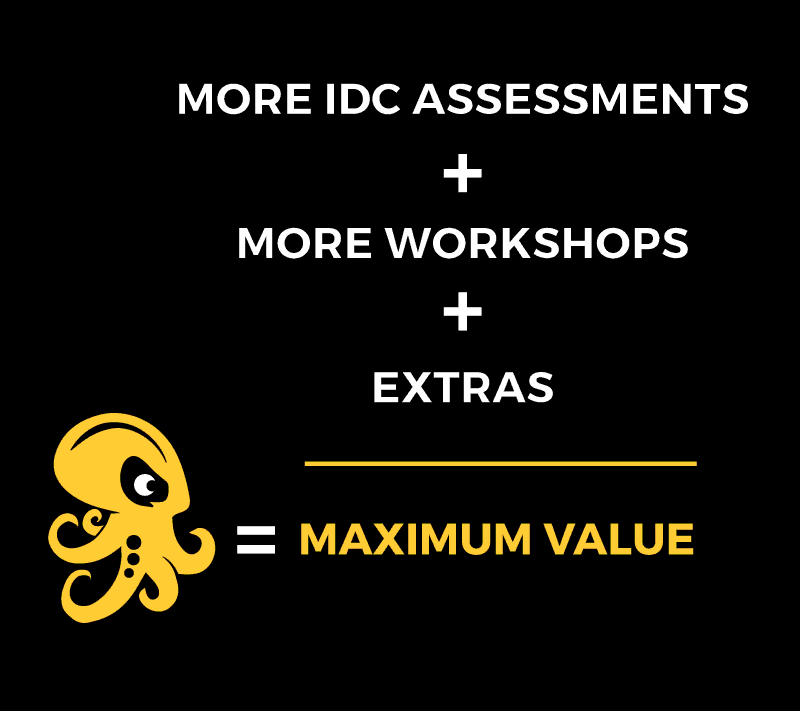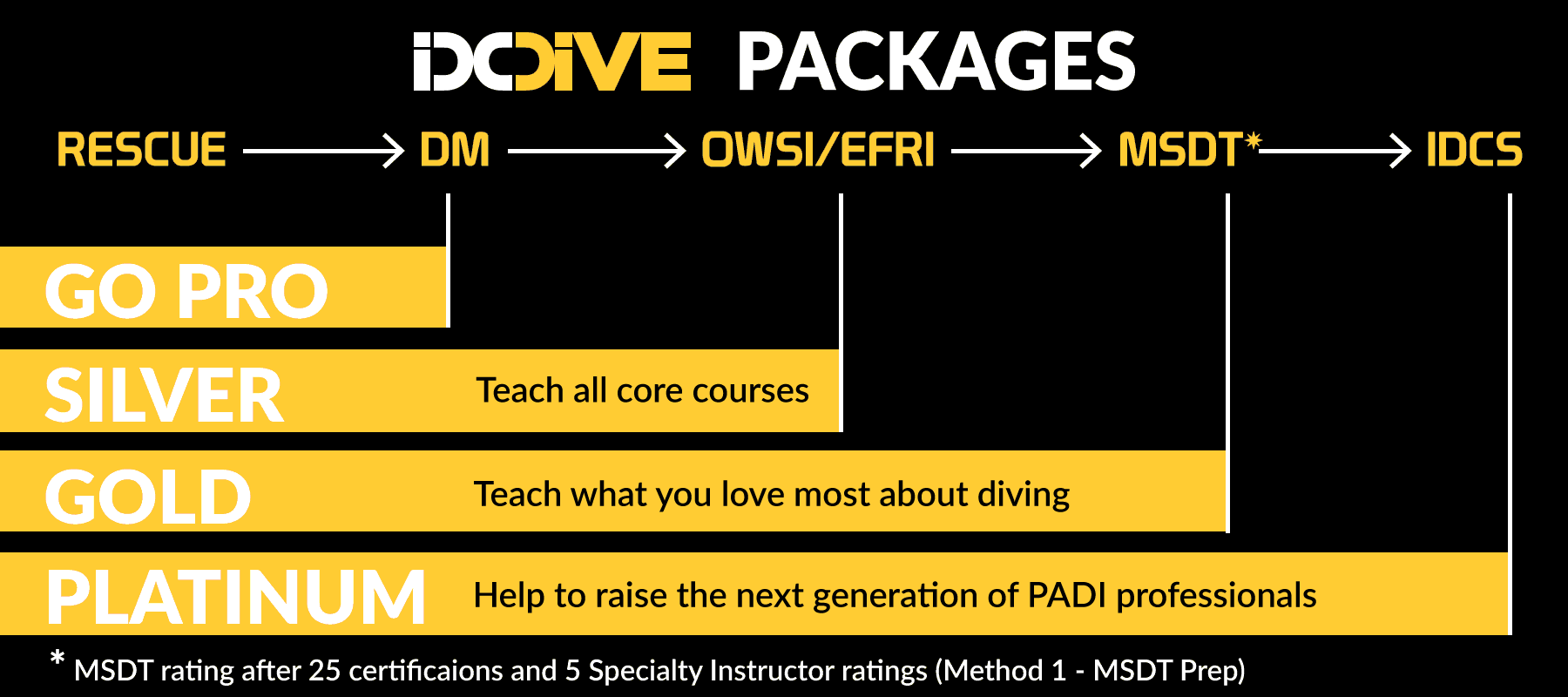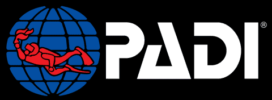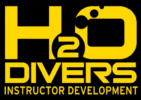Dive Theory Skills & Environment
DOM GIBBINGS
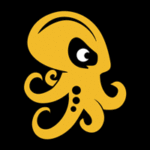
Dive Skills & Environment
Once you have followed our study guidelines, use these Revision guides to help you memorise the required knowledge for your IDC & IE dive theory exams.
Skills
Ascents
- Normal Ascent
- Alternative Air Source
- Controlled Emergency Swimming Ascent (CESA)
- Buoyant Ascent
CESA = continuos “ahhhh” keeping all equipment in place and maintaining normal ascent rate.
Buoyancy Test
BCD should be deflated and when holding a normal breath, the diver should float at eye-level. When exhaling the diver should sink slowly.
Free Flowing Regulator
Do not seal your lips around the mouthpiece.
Safety Stop
- At the end of a particularly deep or long dive
- When you’re near decompression limits
- At the end of virtually every dive, provided there are no other safety concerns such as extremely low air supply.
Equipment Assembly
The most common reason for cylinders slipping is adjusting the tank band when it is dry.
Specialties
Search & Recovery
If trying to locate an object, the search pattern used is determined by the size of the object and the conditions and environment you’re diving in. Searches close to the shore can make use of natural navigation such depth and sand ripples.
SEARCH
Fin kicks and arm spans can be used to determine distance.
The most accurate method of measuring distance underwater is arm spans.
RECOVERY
A lift bag should be used anytime the “object to be recovered” is more than 4-7 kg negatively buoyant.
Bowline knot = for making a reliable, easy to untie loop in a rope.
Night Dive
Should include a primary light, a back up dive and a glow stick on the tank.
Deep Dive
The maximum depth for recreational diving is 40m.
Navigation
Trust Your Compass: Use of the compass examples:
- triangle pattern = 120º
- reciprocal heading = 180º
Directional Information
- Light and shadows
- Plants and animals
- Noises
Overhead Environment
Requires:
- special equipment
- special training
- special procedures
Diving Problems
Drowning
Near Drowning: anyone who is involved in a near drowning should be hospitalized even if they appear fine as secondary drowning could occur
DCS
DCS FIRST AIDS
- Administer 100% oxygen and lay flat.
- The left side down. head-low position should be used only if highly suspected of suffering lung overexpansion injuries and discontinued after the first 20 minutes or if any discomfort occurs. Any doubt, don’t use it.
Never try in the water re-compression as the diver has to remain at depth for several hours and its unlikely the body can maintain the heat, and if the symptoms worsen to the point of needing medical assistance this would prove rather difficult. Victims also need various intravenous fluids and drugs during treatment.
FIRST AID FOR A NON BREATHING DIVER
The priority is provide regular rescue breaths on the surface. The preferred method for provide rescue breaths at the surface is mouth to pocket mask.
CPR = 2 breaths for every 15 compressions
Stress
Physiological
Physical
Panicked Diver
Panicked Diver on the surface will usually struggle with a deflated BCD, mask off, snorkel and/or regulator out of mouth.
React: Keep your regulator in place and establish positive buoyancy.
Marine Life Injuries
Symptoms:
- loss of consciousness, weakness and nausea
- mental confusion
- spreading numbness, paralysis
- severe pain
- local swelling, inflammation or welts
- cardiac arrest
First Aid of Venomous Marine Wounds:
- Immersion in hot water for at least 30-90 minutes after carefully removing foreign matter
- Jellyfish tentacles should be removed from wound with forceps or similar tool (do not rinse stinging cells with fresh water)
- Try to keep the victim positioned so the wound is below the level of the heart
- Treat for shock
Seasick
- Go to the leeward side of the deck
- Look at the horizon
- Be out of exhaust fumes and in fresh air.
Bleeding
- Apply a dressing and direct pressure.
- If blood soaks through the dressing, maintain direct pressure and apply additional dressing over the first.
Boat
Parts of the Boat
STERN = back end of a ship
BOW = front end of a ship
STARBOARD = on the right when one is facing forward
PORT = on the left when one is facing forward
AFT = at, near or toward the stern of a ship (tail of a plane)
HEAD = toilet
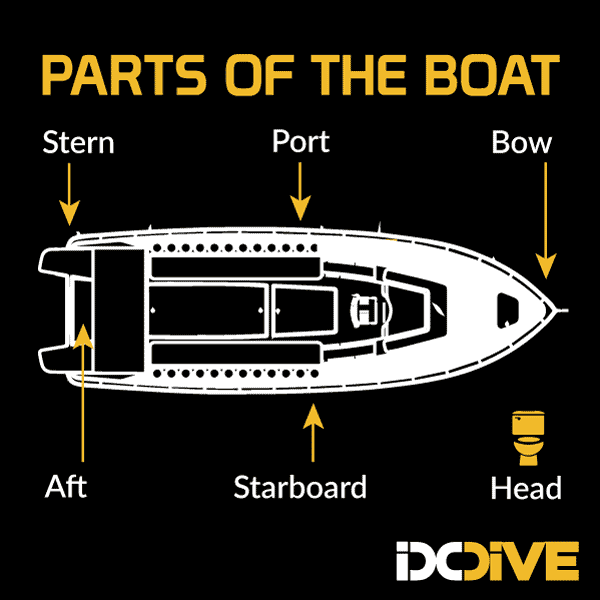
Sea Environment
Environmental Conditions
TEMPERATURE = Thermocline = Abrupt transition to distinctly cold water.
VISIBILITY = Principal Factors that affect visibility
- Water Movement
- Suspended particles
- Weather (example: excessive rainfall can reduce the visibility)
- Bottom Composition
WATER MOVEMENT = Currents = The 4 principal causes for currents are:
- wind blowing over the surface
- unequal heating/ cooling of the water
- tidal movement
- waves
BOTTOM COMPOSITION
AQUATIC LIFE
SUN
Avoid Damage
- Proper buoyancy control, wear no more weight than necessary.
- No touching
- Streamlined equipment
Water Movement
Waves
Waves break when the depth is about 1.3 times the same height as the wave.
Surge
Is created by waves passing overhead in shallow water.
Currents
CAUSES for currents:
- wind blowing over the surface
- unequal heating/ cooling of the water
- tidal movement
- waves
LONGSHORE CURRENT = when waves approach the shore at a slight angle, pushing water down the shoreline, so begin your dive up-current of exit.
RIP CURRENT = Water funneling back to sea through a narrow opening in a reef or sand bar.
Rip Currents are very strong and carry you away from the shore very quickly.
Identified by a line of turbid, foamy water moving seaward. If caught in one swim parallel to the shore.
UPWELLING = Slow moving current commonly caused by offshore winds pushing warm surface water away -as surface water moves out to sea deep water flows upward and takes its place.
This water is usually very clear and cold.
Tides
CAUSES: Are caused by the gravitational influence of the earth, the sun and the moon. The moon has the greater effect because it’s closer to the earth.
SLACK HIDE TIDE = When High Tide Peaks. It’s the ideal time to dive!
Ocean Currents
SOUTHERN HEMISPHERE = South to North as Ocean Currents Flow anti-clockwise.
NORTHERN HEMISPHERE = North to South as ocean currents flow clockwise.
⎮ Privacy Notice ⎮ Cookies Policy ⎮ Sitemap ⎮ © IDC DIVE 2018, Powered by Katuak



